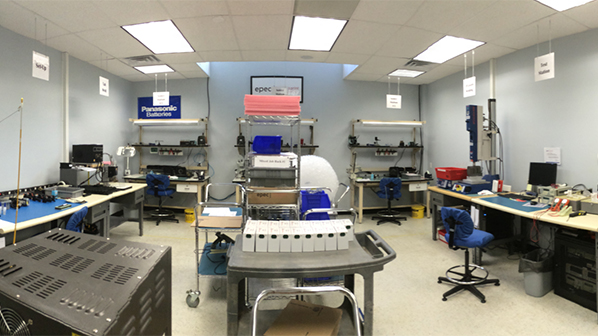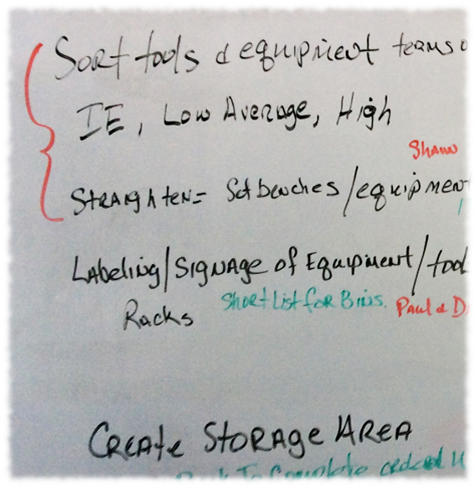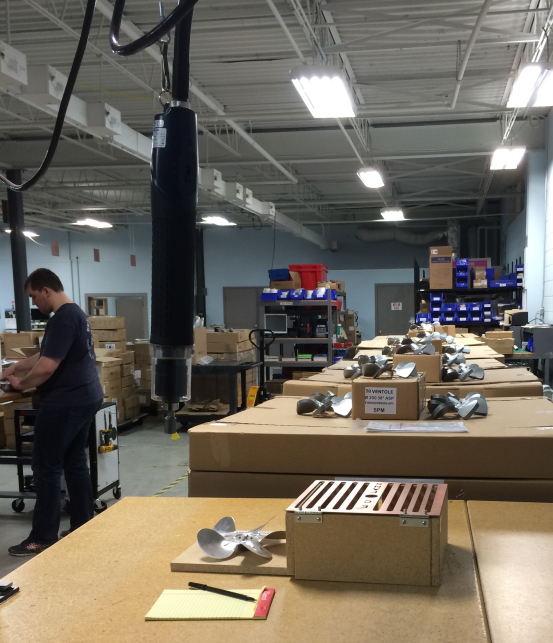Lean Manufacturing Concerns for the Small Manufacturer
By Epec Engineered Technologies
As a small manufacturer, you may think that Lean manufacturing does not fit your business model. On the other hand, maybe you are eager to get the benefits of Lean but you do not know where to start. You have read books, articles, and you have been on factory tours. All of these examples have one thing in common; they demonstrate Lean manufacturing principles using big industrial operations as the example.

Figure 1: Example of Battery Pack Assembly Area
All too often the examples that tout Lean manufacturing cite big manufacturing plants run by multinational corporations. These examples show thousands of cars coming off an assembly line or tons of bauxite processed daily.
The managers and engineers in the interviews are part of a large conglomerate with considerable resources available. Often the local operation relied on the help of experts on corporate staff, or the project itself was part of a corporate initiative, funded far away from the local bottom line. You may start to get the feeling "this isn’t for us". You see the differences between you and them; "I have much lower product volume and a higher product mix", "I do not have as much clout with my customers or suppliers", "I have many different hurdles than these guys", "I have resource issues. If I were to go Lean, I need to do it with the staff I have and the budget I have", and, "I’m not sure that Lean will help my small operation".
But Ask Yourself,
- Do my products ship on time?
- Are we knee deep in the seven wastes?
- Do you have far too many customer returns, non-conformances, or scrap?
- Are simple production activities needlessly complicated?
- Are your best people often giving you convoluted answers to simple questions?
- Do daily operations rely on heroic actions taken by your best people, who step up and expedite jobs through vague, undocumented, or contradictory requirements?
If you answered yes to any of those questions, then you need Lean.

Figure 2: Example of White Board Sketch
Lean has been around since the 1980s so you may have tried Lean before. Maybe, some of your staff has experience working in a Lean operation. You may get prescriptive advice like "If only we used shadow boards", "we really need to do 5S audits", or "let’s arrange the work cells into a U shape". You do not know where to begin. Perhaps there is even spirited debate amongst your staff about what to do first. Resist these calls to action. While some of this advice may be right, validating your approach comes first. Following unvalidated advice is no better than playing the lottery.
Starting Your Lean Initiative
We can start at the beginning – once you find the beginning. The confusion for many is that Lean seems to be about methods. The "Lean Tool Box" terminology lends credence to the idea that once we learn how to use these Lean tools we will go out into the work environment and recognize processes that are not lean enough.
Furthermore, the Five Lean Principles lead some to believe that we start our Lean initiatives once we identify value. This is especially true if you’re a small manufacturer, your entry point into a Lean project should be based around your biggest problem.
For Lean to work for you, you may be better off looking at things in a different way than you have been.

Figure 3: Example of Fan Assembly Area
Identifying Your Biggest Problems
When you start your Lean initiative, get your team together and ask: what are our biggest problems? Ensure that everyone participates. You may get responses like "On Time Delivery is abysmal", "Product fallout is costing a fortune", "If only those guys in the other department would…" If you get a lot of finger pointing rather than constructive problem solving, your problems are more fundamental than Lean.
Your processes and work instructions may be much too vague. In any case, discuss, contrast, and compare the answers. Get consensus. Vote on the biggest problem. If it is too lofty a goal, break it into chunks. Dig in; find the root cause of the problem.
Your Next Steps
With your biggest problems identified and your staff trained to the Lean toolbox, you are ready to go! Maybe you think you are ready, but before you begin, I advise you to do a few things.
- Can you find a small manufacturer nearby that did a Lean implementation? If they are not a competitor, they will be glad to show off their system. Reach out to your local suppliers or manufacturers' representatives. They may know of an organization nearby that has a nice Lean implementation. Another avenue is through professional groups like ASQ or APICS.
- Are your suppliers themselves up to snuff? For your Lean efforts to work, you will rely on a supply of quality parts. You may need to address parts quality issues or redesign your product to be more manufacturable for your Lean efforts to pay off. Over time as you practice Lean principles, you will see how Lean tools become a big and effective part of your improvement process.
Conclusion
If you ever decide to visit us, you will see some examples of Lean tools, shadow boards, Value Stream Maps, a raw goods supermarket, the U shaped work cell, visual management, 5S audits, and more. Lean for us is not so much about deploying the Lean Tool Box. We do use Lean tools as countermeasures to the problems we confront. Lean helps us create manufacturing processes that deliver quality products on time through defined processes.


